WOW
SLOW TRAVEL
52 CITIES
1 WEEK
EACH CITY
52 WEEKS
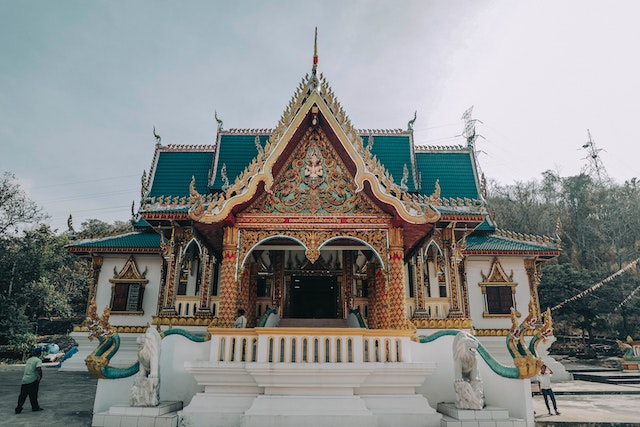
Laos
Laos, officially known as the Lao People’s Democratic Republic, is a landlocked country located in Southeast Asia. It is known for its stunning landscapes, rich culture, and a more relaxed pace of life compared to some of its neighboring countries. Here are some key facts and information about Laos:
Capital: Vientiane is the capital and largest city of Laos. It is located on the banks of the Mekong River, which forms the border with Thailand.
Geography: Laos is a mountainous country with lush forests, fertile plains, and numerous rivers. The Mekong River, one of Southeast Asia’s major waterways, flows through the country. Laos shares borders with several countries, including Thailand, Vietnam, Cambodia, China, and Myanmar.
Language: Lao is the official language of the country. French and English are also spoken to varying degrees, especially in urban areas and among the educated population.
Culture: Laos has a rich cultural heritage influenced by Theravada Buddhism, which plays a significant role in daily life. The country is known for its Buddhist temples, traditional music, dance, and festivals, such as the Pi Mai Lao (Lao New Year) celebration.
Cuisine: Lao cuisine features sticky rice as a staple food, accompanied by various flavorful dishes. Some popular Lao dishes include larb (a spicy minced meat salad), tam mak hoong (green papaya salad), and Mok Pa (steamed fish in banana leaves).
Tourism: Laos has been growing as a tourist destination, attracting travelers interested in its natural beauty, cultural sites, and outdoor activities. Luang Prabang, a UNESCO World Heritage city, is a popular destination known for its temples and traditional architecture.
Natural Beauty: Laos is renowned for its stunning landscapes, including limestone karsts, waterfalls, and caves. The country offers opportunities for trekking, caving, kayaking, and exploring national parks.
Economy: Laos’ economy is primarily based on agriculture, mining, and hydropower. The country has been developing its infrastructure and opening up to foreign investment in recent years.
History: Laos has a complex history that includes various kingdoms, colonial rule by France, and involvement in the Vietnam War. The country became independent from France in 1953 and has since experienced periods of political instability.
Government: Laos is a one-party socialist republic with the Lao People’s Revolutionary Party as the dominant political force. The government has tight control over political and media activities.
Visa Requirements: Laos offers various types of visas for tourists and longer-term visitors. It’s essential to research the specific visa requirements and regulations based on your intended length of stay and purpose.
Transportation: Laos has a limited rail network, and road travel is the primary mode of transportation. The country’s infrastructure is improving, but roads can still be challenging in some remote areas.
Laos offers a unique blend of natural beauty, culture, and history. It is often appreciated by travelers and expatriates seeking a quieter and more traditional experience in Southeast Asia. However, it’s essential to consider factors such as visa requirements, healthcare facilities, and political stability when planning a visit or extended stay in Laos
Laos is a relatively lesser-known retirement destination for Americans compared to some other countries in Southeast Asia. However, it does offer a unique and tranquil lifestyle for those seeking a retirement experience off the beaten path. While there aren’t cities in Laos that are specifically known for large expatriate retirement communities, you may consider the following cities for retirement based on their attributes:
Luang Prabang: Luang Prabang is a UNESCO World Heritage city known for its well-preserved architecture, traditional Buddhist temples, and serene atmosphere. It’s located in northern Laos along the Mekong River and offers a slower pace of life. While it attracts tourists, it’s also a peaceful place to consider for retirement.
Vientiane: Vientiane, the capital of Laos, offers a mix of urban amenities and a more laid-back atmosphere compared to larger Asian capitals. It has several international schools and healthcare facilities. The city provides a blend of cultural experiences and modern conveniences.
Savannakhet: Savannakhet is a city in southern Laos near the Thai border. It’s relatively small and has a quiet lifestyle. The city offers a range of amenities and is known for its French colonial architecture and pleasant riverfront area.
Pakse: Pakse is located in southern Laos and serves as the capital of Champasak Province. It’s known for its coffee plantations, waterfalls, and proximity to the Bolaven Plateau. Pakse offers a more relaxed environment and access to nature.
Nong Khai (Thailand): While not in Laos, Nong Khai is a city located just across the border from Vientiane. It’s a popular destination for expatriates due to its proximity to Laos and the Mekong River. Nong Khai offers a range of services and amenities.
It’s important to note that Laos is still developing its infrastructure and services, and the lifestyle in many areas can be simpler and less Westernized compared to countries with more established expatriate communities. Healthcare facilities may not be as advanced in some regions, so it’s essential to consider your healthcare needs when planning retirement in Laos.
Additionally, visa requirements and regulations can change, so it’s crucial to research and understand the latest visa options and requirements for retirement in Laos. Consulting with expatriate communities, legal experts, and local authorities can provide valuable guidance for retirees considering Laos as their retirement destination
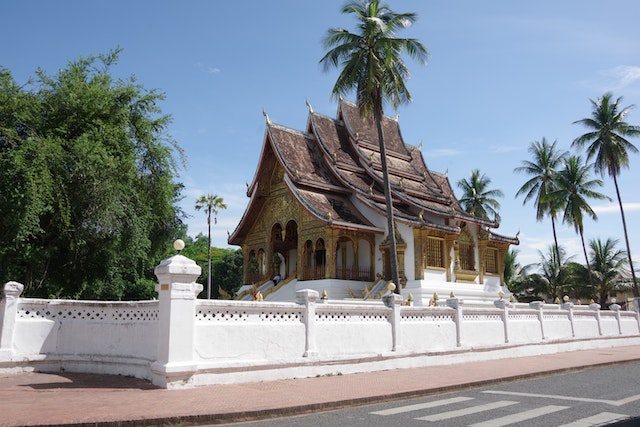
Luang Prabang
Luang Prabang is a historic and picturesque city located in northern Laos, at the confluence of the Mekong and Nam Khan rivers. It is renowned for its well-preserved traditional architecture, Buddhist temples, and serene atmosphere. Luang Prabang was designated as a UNESCO World Heritage site in 1995, recognizing its cultural and historical significance. Here are some key details and highlights of Luang Prabang:
Culture and History: Luang Prabang was the capital of the Kingdom of Laos until 1975. The city is known for its Buddhist heritage, with numerous temples and monasteries. The historic center features a blend of traditional Lao and French colonial architecture.
Temples and Monasteries: The city is home to many beautiful temples, including Wat Xieng Thong, Wat Mai Suwannaphumaham, and Wat Visoun. The daily almsgiving ceremony, where monks collect offerings from locals and tourists, is a significant cultural tradition.
Night Market: Luang Prabang’s night market is a popular attraction where you can find a variety of handicrafts, textiles, and local products. It’s a great place to shop for souvenirs and immerse yourself in the local culture.
Natural Beauty: The surrounding countryside offers lush landscapes, waterfalls like Kuang Si Falls, and opportunities for outdoor activities such as hiking, trekking, and kayaking. The Mekong River provides a serene backdrop to the city.
Traditional Lao Cuisine: You can savor traditional Lao dishes in Luang Prabang, such as laap (minced meat salad), tam mak hoong (green papaya salad), and sticky rice. The city also has a range of international dining options.
Relaxed Atmosphere: Luang Prabang is known for its peaceful and laid-back atmosphere. The absence of traffic lights adds to the city’s charm, and the slower pace of life is ideal for retirees seeking tranquility.
Cultural Festivals: The city hosts various cultural festivals and events throughout the year, including the Lao New Year (Pi Mai Lao) celebration, boat races, and religious ceremonies.
Accommodation: Luang Prabang offers a variety of accommodation options, from boutique hotels and guesthouses to luxury resorts. Many of these establishments provide comfortable and authentic stays.
Transportation: The city has a small airport with domestic flights, making it accessible from Vientiane and other major cities in Laos. Within Luang Prabang, you can get around on foot or by tuk-tuk.
Retirement: Luang Prabang’s serene environment, rich cultural heritage, and beautiful surroundings make it an attractive destination for retirees seeking a tranquil retirement experience in Southeast Asia. It offers a unique blend of history, culture, and natural beauty.
Before considering Luang Prabang for retirement, it’s essential to visit the area, explore its amenities, and gauge whether it aligns with your lifestyle and retirement goals. Additionally, understanding the visa requirements and regulations for retirement in Laos is crucial for planning a long-term stay in Luang Prabang or elsewhere in the country
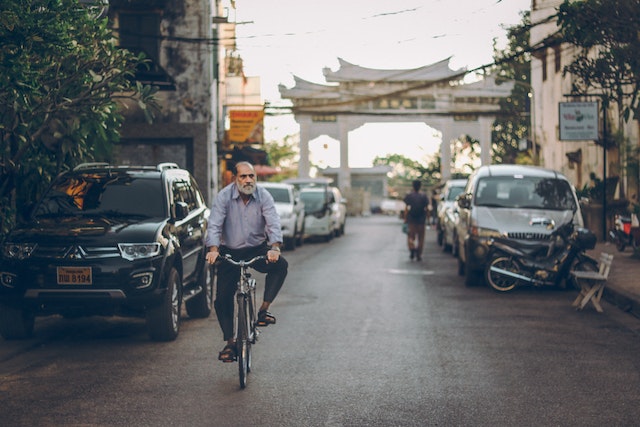
Vientiane
Vientiane is the capital and largest city of Laos, located in the northern part of the country along the banks of the Mekong River. It serves as the political, economic, and cultural center of Laos. Here are some key details and highlights of Vientiane:
Culture and History: Vientiane has a rich cultural heritage influenced by Buddhism and French colonial history. The city is home to several Buddhist temples and monasteries, including Wat Phra Keo, which once housed the Emerald Buddha, and Pha That Luang, a national symbol of Laos.
French Colonial Architecture: Vientiane boasts a mix of architectural styles, including French colonial buildings and traditional Lao structures. The city’s architectural diversity adds to its unique charm.
Buddhist Heritage: The city has numerous Buddhist temples (wats) and monasteries. Visitors can experience Buddhist rituals and explore these serene places of worship. The That Luang Festival, celebrating Laos’s most important stupa, is a significant annual event.
Nightlife and Dining: Vientiane has a vibrant dining scene with a variety of restaurants offering Lao and international cuisine. The city also has a modest nightlife scene with bars, nightclubs, and live music venues.
Morning Almsgiving: Similar to Luang Prabang, Vientiane has a morning almsgiving ceremony where monks collect offerings from locals and tourists. This tradition provides insight into Lao culture and spirituality.
Mekong River: The Mekong River is a prominent feature of Vientiane’s landscape. You can enjoy riverfront walks, dine at riverside restaurants, and take boat rides on the Mekong.
Cultural Events: Vientiane hosts various cultural events and festivals throughout the year, including celebrations for Lao New Year (Pi Mai Lao), boat races, and traditional dance performances.
Accommodation: The city offers a range of accommodation options, from budget guesthouses to upscale hotels and international chains. There are plenty of choices to suit various budgets and preferences.
Transportation: Vientiane is well-connected by road and air. The city has Wattay International Airport, with domestic and limited international flights. Getting around within the city is easy, with tuk-tuks, taxis, and rental bicycles available.
Education and Healthcare: Vientiane has a few international schools and healthcare facilities that cater to expatriates and the local population. While not as advanced as in some Western countries, healthcare services are available.
Economy: Vientiane’s economy is diverse, with government services, trade, and tourism playing significant roles. The city has seen some development and modernization in recent years.
Retirement: Vientiane’s mix of cultural attractions, amenities, and a somewhat more urban lifestyle compared to other parts of Laos makes it an option for retirees. It offers a blend of traditional Lao culture and modern conveniences.
When considering Vientiane for retirement or an extended stay, it’s important to research and understand the visa requirements and regulations for retirees in Laos. Additionally, visiting the city and exploring its amenities will help you determine if it aligns with your retirement goals and lifestyle preferences
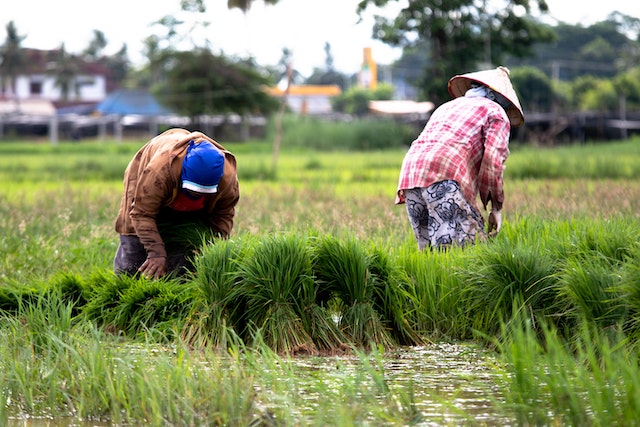
Savannakhet
Savannakhet is a city located in southern Laos, near the border with Thailand. It is the capital of Savannakhet Province and serves as an important economic and cultural center in the region. Here are some key details and highlights of Savannakhet:
Culture and History: Savannakhet has a rich cultural heritage influenced by both Lao and French colonial history. The city features a mix of architectural styles, including traditional Lao buildings and colonial-era structures.
French Colonial Architecture: Similar to other cities in Laos, Savannakhet has well-preserved French colonial buildings that add to its unique charm. Strolling through the city, you’ll notice the architectural influence of the colonial era.
Temples and Pagodas: The city is home to various Buddhist temples and pagodas, including Wat Sainyaphum, Wat Pha That Sikhottabong, and That Ing Hang Stupa. These religious sites are important to the local culture and offer insight into Buddhist traditions.
Dinosaur Museum: Savannakhet is known for its Dinosaur Museum, which showcases fossils and information about dinosaurs that once inhabited the region. It’s an interesting destination for history and science enthusiasts.
Countryside and Nature: The surrounding countryside of Savannakhet is characterized by picturesque landscapes, rice fields, and small villages. Exploring the countryside provides opportunities for outdoor activities like hiking and cycling.
Mekong River: The Mekong River flows near Savannakhet, and you can enjoy riverfront views and activities along its banks. Sunsets over the Mekong are particularly stunning.
Night Market: The city has a night market where you can shop for local handicrafts, textiles, and souvenirs. It’s a good place to immerse yourself in the local culture and pick up some unique items.
Food and Dining: Savannakhet offers a variety of dining options, with a focus on traditional Lao cuisine. You can savor local dishes like laap (minced meat salad), tam mak hoong (green papaya salad), and Mok Pa (steamed fish in banana leaves).
Accommodation: There are accommodation options in Savannakhet, including guesthouses and small hotels. While not as touristy as some other cities in Laos, the city provides comfortable places to stay for visitors.
Transportation: Savannakhet is accessible by road from other major cities in Laos, including Vientiane and Pakse. The city has a small airport with limited domestic flights. Within the city, you can get around by tuk-tuk or bicycle.
Retirement: Savannakhet offers a quieter and simpler lifestyle compared to larger urban centers in Laos. It may be an attractive destination for retirees seeking a peaceful environment with access to cultural attractions and natural beauty.
Visa Requirements: As with retirement in any foreign country, it’s important to understand the visa requirements and regulations for retirees in Laos before planning an extended stay in Savannakhet.
Savannakhet provides a blend of cultural experiences, natural beauty, and a relaxed atmosphere, making it an appealing destination for those looking to explore a less touristy and more traditional part of Laos
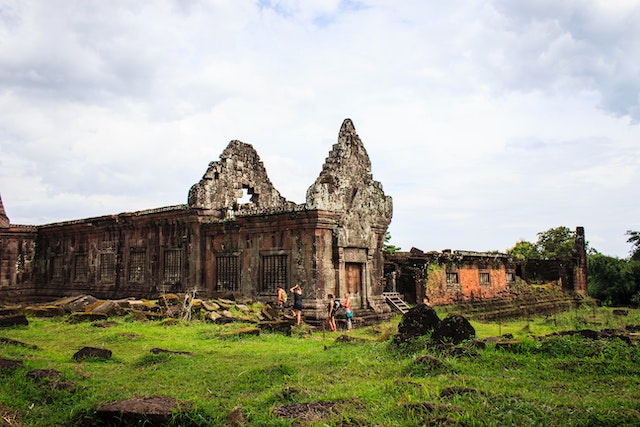
Pakse
Pakse is a city located in the southern part of Laos, specifically in Champasak Province. It’s the capital of the province and serves as an important economic and cultural center in the region. Here are some key details and highlights of Pakse:
Cultural and Historical Significance: Pakse has a rich cultural heritage influenced by Lao, Thai, and French colonial history. The city features a mix of architectural styles, including traditional Lao buildings and colonial-era structures.
French Colonial Architecture: Similar to other cities in Laos, Pakse has well-preserved French colonial buildings that add to its unique charm. These structures reflect the influence of the colonial era on the city’s architecture.
Wat Phou: Wat Phou (Vat Phu) is a significant historical and religious site located near Pakse. It’s a UNESCO World Heritage site and an ancient Khmer temple complex that dates back to the Angkor period. The temple’s architecture and ruins are impressive and provide insight into the region’s history.
Countryside and Natural Beauty: The surrounding countryside of Pakse is known for its picturesque landscapes, including rice fields and the Bolaven Plateau. This region offers opportunities for outdoor activities such as hiking, trekking, and visiting waterfalls like Tad Fane.
Mekong River: The Mekong River flows near Pakse, and you can enjoy riverfront views and activities along its banks. The river adds to the city’s scenic beauty and provides opportunities for boat rides and relaxation.
Food and Dining: Pakse offers a range of dining options, with a focus on traditional Lao cuisine. You can savor local dishes like laap (minced meat salad), tam mak hoong (green papaya salad), and various noodle soups.
Local Markets: The city has local markets where you can explore and shop for fresh produce, handicrafts, textiles, and souvenirs. The markets provide a glimpse into daily life in Pakse.
Accommodation: There are accommodation options in Pakse, including guesthouses, small hotels, and resorts. Visitors can find comfortable places to stay that cater to various budgets and preferences.
Transportation: Pakse is accessible by road from other major cities in Laos, including Vientiane and Savannakhet. The city has an airport with domestic flights, connecting it to Vientiane and other destinations within Laos.
Retirement: Pakse offers a serene and tranquil lifestyle, making it an attractive destination for retirees seeking a peaceful environment with access to cultural attractions and natural beauty. The city provides a slower pace of life compared to larger urban centers.
Visa Requirements: Before considering retirement in Pakse or any foreign city, it’s essential to understand the visa requirements and regulations for retirees in Laos. Consulting with local authorities and expatriate communities can provide valuable guidance.
Pakse combines cultural experiences, natural beauty, and a laid-back atmosphere, making it an appealing destination for those looking to explore the southern part of Laos. Whether you’re considering retirement or a visit, Pakse provides a unique blend of history, culture, and scenic landscapes
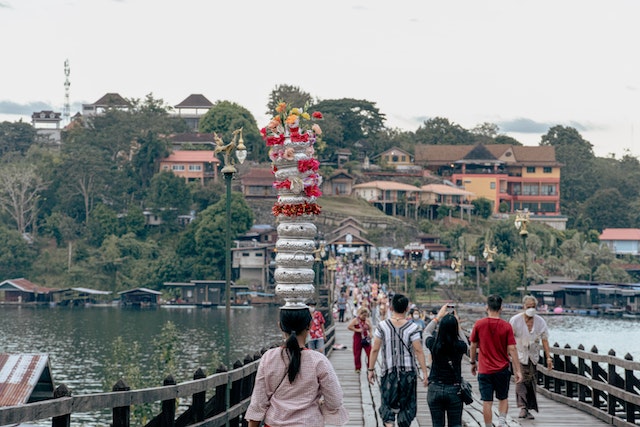
Nong Khai
Nong Khai is a city in northeastern Thailand, located on the banks of the Mekong River, across from Vientiane, the capital of Laos. It’s known for its scenic riverside setting, cultural attractions, and its role as a gateway to Laos. Here are some key details and highlights of Nong Khai:
Mekong River: The city is situated along the Mekong River, providing beautiful views and opportunities for leisurely walks along the riverfront. Sunset views over the Mekong are particularly captivating.
Sala Keoku Park: This park, located a short distance from the city center, is known for its massive sculptures inspired by Buddhist and Hindu mythology. It’s a unique and somewhat surreal attraction in the area.
Wat Pho Chai: This temple, located in Nong Khai, is a prominent religious site and a place of worship. It’s known for its striking architecture and serene atmosphere.
Tha Sadet Market: Nong Khai has a local market where you can shop for fresh produce, handicrafts, clothing, and a variety of goods. It’s a great place to explore and experience local culture.
Naga Fireballs: Nong Khai is famous for the annual phenomenon known as the Naga Fireballs. These mysterious glowing orbs rise from the Mekong River during certain nights of the year, attracting visitors and locals alike.
Friendship Bridge: The First Thai-Lao Friendship Bridge connects Nong Khai to Vientiane, making it a key border crossing between Thailand and Laos. Many travelers pass through Nong Khai on their way to or from Laos.
Museum: The city has a few museums, including the Nong Khai Museum, which provides insights into the history and culture of the region.
Accommodation: Nong Khai offers a range of accommodation options, from budget guesthouses to hotels with river views. You can find comfortable places to stay during your visit.
Food and Dining: The city features a variety of dining options, including traditional Thai and Isaan cuisine. You can enjoy local dishes like som tam (papaya salad), grilled meats, and flavorful curries.
Transportation: Nong Khai is well-connected by road and rail to other major cities in Thailand. The city has a train station and bus terminal. It’s also accessible by air via Udon Thani Airport, which is about an hour’s drive away.
Retirement: While Nong Khai is not as commonly known as some other Thai cities for retirement, its tranquil atmosphere, river views, and proximity to Laos make it an interesting option for retirees seeking a peaceful lifestyle in a unique setting.
Visa Requirements: If you’re considering retiring in Nong Khai or any other part of Thailand, it’s important to understand the visa requirements and regulations for retirees in Thailand and consult with relevant authorities for up-to-date information.
